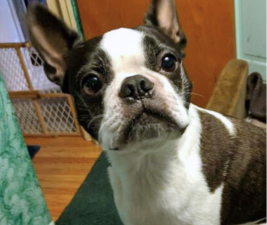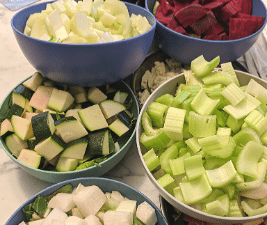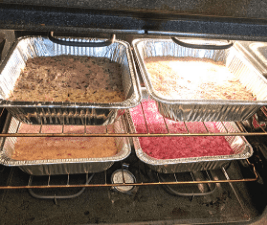The best food for your dog is the one they’ll eat and thrive on.
The last couple of years have seen many new options, both brands and different forms of dog food. It used to be either canned or dry kibble. Now the choices include raw, frozen or freeze-dried, fresh refrigerated, subscription boxes, various custom-blended mixtures, pouches, containers, bags, cans, grain or none, percentage of protein, carnivore or vegetarian, etc.
And the commercials we see touting the various brands and forms are aimed straight at our guilt triggers. Don’t you want to give your dog the “best” food with the “healthiest” ingredients? They aim right at the soft spots.
First things first
When choosing your dog’s food, try to remember that your dog really doesn’t care what it looks like. People “eat first with their eyes” but dogs don’t. Their most important sense when choosing food is the smell. And the smells that attract dogs generally aren’t all that appealing to people. That expensive container that looks like a delicious stew is made to attract your eye – not your dog’s.
Does that mean you should choose the ugliest, stinkiest dog food available? It means that you should buy dog food based on logic, not emotion.
Dog food journey
Personally, we feed our dogs a mixture of home-made and kibble. It was a long and painful process to figure out what was best for us and our dogs. For training, we use stinky treats our dogs adore.
We switched because of Booker (pictured), Fran’s now 10-year-old Boston Terrier. If you’ve been following us for a while, you know that Booker is “special,” not in a good way. One of his issues is a very sensitive gut. For the first couple years he never had a “normal” poop, was incredibly gassy, and seemed uncomfortable.
We tried all kinds of foods for him. And in keeping with the veterinarian’s advice, introduced each option slowly. Nothing seemed to help. From different proteins, grains, “sensitive stomach” choices, canned, dry, consultations with a nutritionist. His tummy just wasn’t happy.
What worked
Finally, a friend of ours whose business was custom-made dog food hit on the right combination of ingredients and format that worked for Booker. The difference was life-changing for all of us. She figured out that Booker is a dog who can’t tolerate raw food, or certain proteins, must have vegetables, and limited grains.
And then she went out of business. That’s when we started making our dog’s food. We didn’t have a choice. If we wanted to use what worked for Booker, we had to make it ourselves.
Luckily, our friend did give us the recipes she used. So now, once every month, we devote a day to shopping, chopping, blending, portioning, and freezing dog food.
The rest of the story
When we started making food, we were also traveling quite a bit. Our dogs always came along on any trips. As insurance, we decided to keep our dogs accustomed to a readily-available commercial dog food. If we got stuck on the road, or something happened with the home-made food, we wanted to be sure our dogs would be okay.
We actually wouldn’t wish our dog food adventures on anyone. Food-making day is messy and stinky. But it works for us and our dogs.
Choose your dog’s food by the results you get. If your dog loves their food, they’re healthy, eyes bright, eager to eat, happy to play, able to sleep comfortably, you’re doing fine.
Enjoyed this post? Click here to sign up for the weekly newsletter and never miss another!












